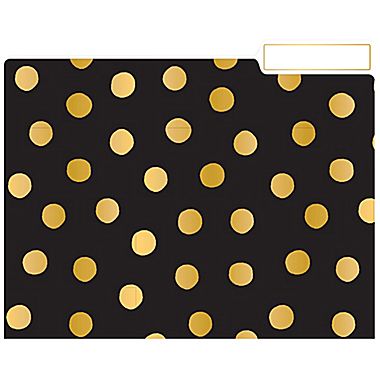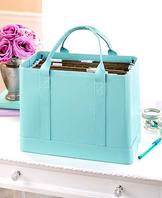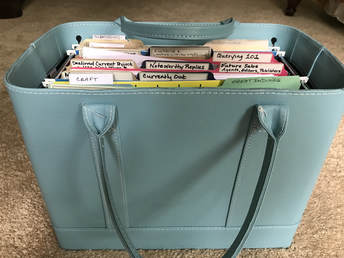 by Francine Puckly Many of us are blessed with dedicated writing and creating spaces. The rest of us are not. Or maybe we are required to work in a difference place for a brief period of time or perhaps we’ve decided to go on a writer’s retreat. Regardless of the reason, it pays to have our projects organized for portability, whether we’re traveling to the living room, the library, or another state. While I have a dedicated writing space (my bedroom), I often squeeze my writing in and around the rest of my family’s schedule. That could be at a baseball field, the dance school parking lot or the dentist’s office. I also love to sprawl out at parks or outdoor cafes on mild days, hunker down at the local library on rainy days, or get into a groove at the local bookstore while I tackle plot or character development issues. Prior to this summer, I probably had an 80% success rate of packing the correct work material when I worked away from home. Sometimes I caught the oversights while still in the garage. But other times I would be settled at a library table when I discovered missing pieces. I knew this summer had to be different. I had to have a 100% success rate. After an extensive knee reconstruction, my college-aged, working-in-Boston, can’t-drive-for-seven-weeks daughter would need me to taxi her—and wait for hours at a time—on a daily basis. It was unacceptable for me to be stranded somewhere waiting for her without the proper writing materials. But I also didn’t want to waste time packing, unpacking, and repacking my files—and worrying that I was forgetting something. There was way too much room for error with that system. Order, complete order, was needed. I spent the better part of May organizing my electronic files and then turned my attention to my paper files. Every last piece of paper was filed. And my paper files mirrored my electronic files, so that items could be located quickly. But to be truly portable, my paper files required the right equipment. After consulting internet resources and a few organizing books, I decided the tools required to make this happen were extra-capacity, reinforced hanging folders, manila (or decorative!) files, and a portable hanging file tote. I created an extra-capacity hanging file for each of my projects--all of them, including those picture book manuscripts covered in cobwebs, abandoned novels or portions of novels, and current novels in various stages of drafting and revision. Each project had its own hanging file, and those hanging files contained manila folders labeled:
Switching between projects became a snap. All of my hanging files were organized the same way, and I could pop a file in or out of the tote.
The last step to peace of mind was establishing a list of all the little items that had to come along with me each day in a separate messenger bag. I “laminated” this list using packaging tape. Your list might look different than mine, but these were my essentials:
While this level of detail might seem like overkill, I only had to create the list once. Each morning I scanned my bag and checked off the list. I took the thinking out of packing and poured that energy into my manuscripts instead. So if you’re taking your writing on the road, I hope these suggestions will help make your portable life stress-free! And happy writing…wherever the day may take you. ~ Francine
1 Comment
 By Kelly Carey A few years ago, I was at good friend’s wedding and I knew the bride was hoping for a packed dance floor. Three songs in and the parquet square was painfully empty. My husband grabbed my hand and said, “Come on, let’s get this party started.” I love to dance and I wanted my friend to have the wedding party she deserved. So we hit the dance floor. Two twirls around and I lost my nerve. Twenty tables of ten times two eyes – you do the math – it was a lot of eyes and I could no longer hear the music. My feet became blocks of cement and every muscle in my body turned rigid. My husband was left trying to twirl a two by four stuck in a five-gallon drum of cement across the floor. I was a dance partner even Derek Hough could not successful spin around. Our friends at table 4 laughed and waved, but no one joined us. The song mercifully ended and my dejected husband dragged his two by four wife back to her seat. We had failed. The party had clearly not started. Why do I share this humiliating failure? And what does it have to do with writing? The same thing can happen to your manuscript. You can have the best idea, set out onto that empty page completely ready, but a few paragraphs in you seize up, just like I did on that dance floor. Here is how it happens. You stop feeling the joy of your own creative energy and you let self-doubt and fear take over. Instead of using your magnificent imagination to conjure up characters, dialogue, and plot twists, you use all your creative energy generating negative comments by potential readers. You drown out the sound of your own writing melody and BAM – you’re a two by four: stiff, halting, and unable to let a single sentence flow across the page. Pieces of lumber cannot write. When you let the thought of how this agent, that editor, or that critique partner will react to every word, sentence, or paragraph, those imagined criticisms will interfere with the exuberance of your writing. Your writing needs to flow with energy and reckless abandon. Judgment is like a giant dam blocking off your writing. You need to bust through that dam. Take a few cleansing breaths and focus only on that positive creative voice in your head and then just write exactly what it tells you to write. That’s it. No judgment, no critique, no mocking friends at table 4, no cement, no two by fours; just you and the sound of your fingers tapping out brilliance across a keyboard. I failed to fill the dance floor at my friend’s wedding because the other guests didn’t see a woman rocking out to her favorite song. Instead they saw my pain, discomfort and humiliation. Who would want to join in on that? If you want readers to share in the joy of your writing, you need to make the process joyful. Judgment and doubt are joy killers and they have no place in your early drafts. Write like you want a full dance floor. Ignore the tables of eyes, and just listen to your own creative music. Readers will come if they can feel the joy in your writing. Deep breath. Hear your music. Go! Dance! Write! |
Peruse blogs for advice and tips from KidLit creatives.
Categories
All
Archives
April 2024
Click to set custom HTML
Click on the RSS Feed button above to receive notifications of new posts on this blog.
|




 RSS Feed
RSS Feed